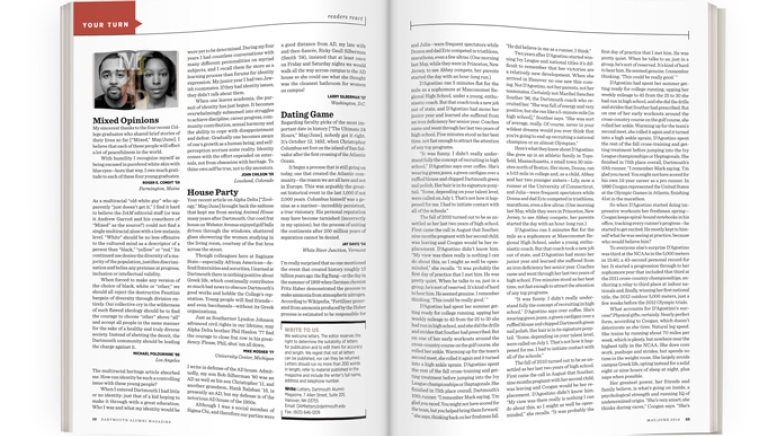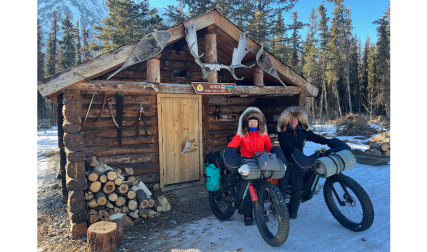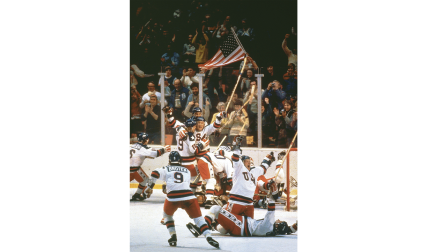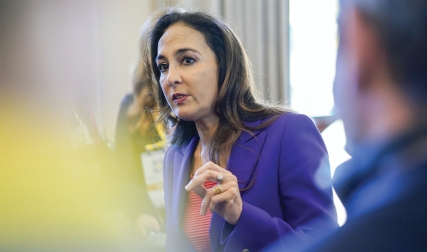Mixed Opinions
My sincerest thanks to the four recent College graduates who shared brief stories of their lives so far [“Mixed,” May/June]. I believe that each of these people will effect a lot of peacefulness in the world.
With humility I recognize myself as being encased in purebred white skin with blue eyes—born that way. I owe much gratitude to each of these four young graduates.
Roger E. Condit ’59
Farmington, Maine
As a multiracial “old white guy” who apparently “just doesn’t get it,” I find it hard to believe the DAM editorial staff (or was it Andrew Garrod and his coauthors of “Mixed” as the source?) could not find a single multiracial alum with a low melanin level. “White” should be no less offensive to the cultured mind as a descriptor of a person than “black,” “yellow” or “red.” Its continued use denies the diversity of a majority of the population, justifies discrimination and belies any pretense at progress, inclusion or intellectual validity.
When forced to make any version of the choice of black, white or “other,” we should all reject the destructive Faustian bargain of diversity through division entirely. Our collective cry in the wilderness of such flawed ideology should be to find the courage to choose “other” above “all” and accept all people in the same manner for the sake of a healthy and truly diverse society. Instead of abetting the deceit, the Dartmouth community should be leading the charge against it.
Michael Poloukhine ’86
Los Angeles
The multiracial heritage article absorbed me. How can identity be such a controlling issue with these young people?
When I entered Dartmouth I had little or no identity: just that of a kid hoping to make it through with a great education. Who I was and what my identity would be were yet to be determined. During my four years I had countless conversations with many different personalities on myriad subjects, and I recall them far more as a learning process than forums for identity expression. My junior year I had two Jewish roommates. If they had identity issues, they didn’t talk about them.
When one leaves academia, the pursuit of identity has just begun. It becomes overwhelmingly subsumed into struggles to achieve discipline, career progress, community contribution, sexual harmony and the ability to cope with disappointment and defeat. Gradually one becomes aware of one’s growth as a human being, and self-perception accrues some reality. Identity comes with the effort expended on externals, not from obsession with heritage. To thine own self be true, not to thy ancestors.
John Chilson ’59
Loveland, Colorado
House Party
Your recent article on Alpha Delta [“Zoology,” May/June] brought back the sadness that kept me from seeing Animal House many years after Dartmouth. Our coed frat house on Webster Avenue enjoyed golf balls driven through the windows, shattered glass showering the women studying in the living room, courtesy of the frat bros across the street.
Though colleagues here at Saginaw State—especially African American—defend fraternities and sororities, I learned at Dartmouth there is nothing positive about Greek life, which continually contributes so much bad news to obscure Dartmouth’s good works and hobble the College’s reputation. Young people will find friends—and even bacchanals—without its Greek organizations.
Just as Southerner Lyndon Johnson advanced civil rights in our lifetime, may Alpha Delta brother Phil Hanlon ’77 find the courage to close frat row in his presidency. Please, Phil, shut ’em all down.
Mike Mosher ’77
University Center, Michigan
I write in defense of the AD house. Admittedly, my son Bob Silberman ’80 was an AD as well as his son Christopher ’11, and another grandson, Hank Balaban ’16, is presently an AD, but my defense is of the notorious AD house of the 1950s.
Although I was a social member of Sigma Chi, and therefore our parties were a good distance from AD, my late wife and then-fiancée, Ricky Gaull Silberman (Smith ’58), insisted that at least once on Friday and Saturday nights we would walk all the way across campus to the AD house so she could use what she thought was the cleanest bathroom for women on campus!
Larry Silberman ’57
Washington, D.C.
Dating Game
Regarding faculty picks of the most important date in history [“The Ultimate 24 Hours,” May/June], nobody got it right. It’s October 12, 1492, when Christopher Columbus set foot on the island of San Salvador after the first crossing of the Atlantic Ocean.
It began a process that is still going on today, one that created the Atlantic community—the reason we are all here and not in Europe. This was arguably the greatest historical event in the last 1,000 if not 2,000 years. Columbus himself was a genius as a mariner—incredibly persistent, a true visionary. His personal reputation may have become tarnished (incorrectly in my opinion), but the process of uniting the continents after 200 million years of separation cannot be denied.
Jay Davis ’54
White River Junction, Vermont
I’m really surprised that no one mentioned the event that created history roughly 13 billion years ago: the Big Bang—or the day in the summer of 1909 when German chemist Fritz Haber demonstrated the process to make ammonia from atmospheric nitrogen. According to Wikipedia, “Fertilizer generated from ammonia produced by the Haber process is estimated to be responsible for sustaining one-third of the earth’s population. It is estimated that half of the protein within human beings is made of nitrogen that was originally fixed by this process.”
Rich Winkler ’74
San Diego
Correction: In shortening chemistry professor Jane Lipson’s comments for publication we incorrectly communicated her rationale for her chosen date (June 23, 1847). Her explanation should have read as follows: On this date, during a meeting of the British Association for the Advancement of Science, William Thompson (later Lord Kelvin) highlighted James Joule’s meticulous experiments quantifying beyond dispute the equivalence of energy transferred as heat and energy transformed into mechanical work. Thompson pointed out that Joule’s results were the definitive answer to questions about the nature of energy and its transformations; their work led directly to the second law of thermodynamics. The laws have profound implications, first felt during the Industrial Revolution, destined to accompany us forever, as we strive to adapt this universe to our needs and desires.
Warm Regards
The May/June issue was excellent with one anomaly in “Sea of Uncertainty,” where Judith Hertog states, “[Professor D.G.] Webster emphasizes that there is no scientific consensus on the effects of global warming….” My professional society, American Geophysical Union, disagrees with that! As I write, globalchange.gov carries its third annual climate assessment warning us “that climate change is affecting every region of the country.” NASA and the University of Washington have reported that Antarctic grounded ice is floating off at a much faster rate than expected, meaning sea level rise will be meters for our next generation.
Wayne Hamilton ’58
Springdale, Utah
Objects Objections
I am not a Dartmouth alumnus but was given a copy of your March/April issue by friend and colleague Mary Suk ’92. Your fabulous expression of the power of material culture [“A History of the College in 50 Objects”] affirms my belief in the pedagogical richness that is exposed through focus on collections of everyday artifacts. You did a great job, but I am left with one burning question: Why is Daniel Webster’s beaver-fur top hat white?
Harley Spiller
New York City
Editor’s Note: The hat is made of the downy beaver “under fur” used to fashion fine hats. Although most hats of the day were dyed black, Webster’s was not.
Given my interest in history and education I sought to interpret a meaning in the 50 objects chosen to tell the story of the College. I looked for a copy of the historic 1891 agreement that obliged alumni to exercise a role in the management of Dartmouth’s affairs, but I see it didn’t make the cut. Not very important, I guess.
Frank Gado ’58
White River Junction, Vermont
The March/April issue is titillating, all the way from the letters to the editor reinforcing the condemnation of the College by Abbye E. Meyer ’02 [“Outside Looking In,” Jan/Feb] to “A History of the College in 50 Objects.”
I remember as a child seeing the headline on the sports page of the local newspaper the Monday after the game, “Giving It Back to the Indians,” an un-tendentious way of describing Cornell’s acknowledgement of the error made in allowing Cornell a fifth down.
Quentin Kopp ’49
San Francisco
Although a few of the items selected to illustrate “A History of the College in 50 Objects” seemed to me to be a bit of a stretch, I guess that could be a never-ending debate by the alumni, the administration and the faculty.
While the respectful homage to Robert Frost, class of 1896 and one of Dartmouth’s most outstanding and famous alumni, was certainly warranted, the article should have referred to the life-size statue of Robert Frost on campus as a much more meaningful object than his monogrammed suitcase. The statue of Robert Frost—conceived, commissioned, paid for and donated to the College by the class of 1961, is a more fitting object of tribute because the statue is visited daily by alumni, students, faculty, administrators, prospective students and guests.
Victor S. Rich ’61
New York City




